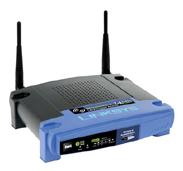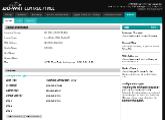
| Customize your wireless router |
Installing an open-source firmware on your wireless router could open up its full potential, giving you more features, control and information on your wireless network.
The Options
 Whilst there is a large number of wireless routers and access points available, many use the same wireless hardware and processor inside, which means that a 3rd party firmware can usually work on more than one type of router. However not all routers have enough memory or flash space for 3rd party firmwares, so the firmwares you can use is very dependant on the wireless router you have.
Whilst there is a large number of wireless routers and access points available, many use the same wireless hardware and processor inside, which means that a 3rd party firmware can usually work on more than one type of router. However not all routers have enough memory or flash space for 3rd party firmwares, so the firmwares you can use is very dependant on the wireless router you have.
Also different firmwares have different goals
- Standard Firmware
- Designed to provide more features, better reporting/diagnostics while still running the device as a standard wireless router/ap
- Mesh Firmware
- Designed to turn your hardware into a wireless mesh node - which allows you to cheaply build large wireless mesh networks across town/campus.
- Hotspot Firmware
- These turn your router into a wireless hotspot, which is ideal for sharing your internet connection in a small cafe, bookshop or just to share your home connection.
Standard Firmware
These firmwares allow you add features usually found on much more expensive kit, such as VPN tunneling, VOIP, WDS support and much more DD-WRT is probably my favorite of all the open source firmwares, as it has a very easy to use web interface that gives access to some quite advanced features, such as showing the signal strength of the client devices connected to the router, advanced DHCP options and much more. Good documentation is available on the wiki, and it supports a number of Asus, Belkin, Buffalo and Linksys Routers.
DD-WRT is probably my favorite of all the open source firmwares, as it has a very easy to use web interface that gives access to some quite advanced features, such as showing the signal strength of the client devices connected to the router, advanced DHCP options and much more. Good documentation is available on the wiki, and it supports a number of Asus, Belkin, Buffalo and Linksys Routers.
OpenWRT is probably the most advanced of all the available firmwares, and is designed to let you pick and choose what features you want on your router. It supports a very large of hardware and has and even larger number of packages available for it, from Asterisk (for VOIP) to TOR (for privacy). OpenWRT is based around command-line access to the router, rather than the web interface of usual firmwares, but fortunately the command line interface is very well documented.
Sveasoft is a little different from the other open source offerings, as they charge $20 a year for access to firmwares and support. If you are deploying the modified routers commercially, then having paid for support may be what you're looking for. Their firmware runs on a range of Asus, Belkin, Buffalo and Linksys kit.
HyperWRT has gone through a number of developers, and was originally designed to simply enable the transmit power of the linksys WRT54G. It now supports a number of Linksys wireless routers.
Mesh Firmware
Many of the wireless mesh systems require a full pc with a wireless card, but some can be installed on a wireless router, which makes it much cheaper. Unfortunately it appears that for the mesh network to work, all the routers need to be running the same firmware.freifunk is based on OpenWRT and runs on the linksys WRT54G and WAP54G routers. Details of the latest firmware are available in english as the rest of the site is in German.
Roofnet This firmware is built by guys at MIT, and will install on a Netgear WGT634U or a standard PC.
Hotspot Firmware
ChilliSpot isn't an actual firmware, but can run on an opensource firmware such as OpenWRT, adding hotspot features to the wireless router. It also runs on a standard linux or freebsd pc.
CoovaAP is a hotspot firmware based on OpenWRT and ChilliSpot, so providing a simpler way of getting a hotspot up and running, and runs on the linksys WRT54G family of routers.
Ewrt is designed as a hotspot in a box, running a captive splash screen based on NoCat. It runs on the Linksys WRT54G and WRT54GS.
Conclusion
The firmware you choose depends both on what hardware you have, and what you want to do with your wireless router. If you are just starting out playing with wireless routers, then I'd recommend the DD-WRT firmware on a linksys WRT54GL wireless router which supports a wide range of firmwares and is easy to upgrade.
